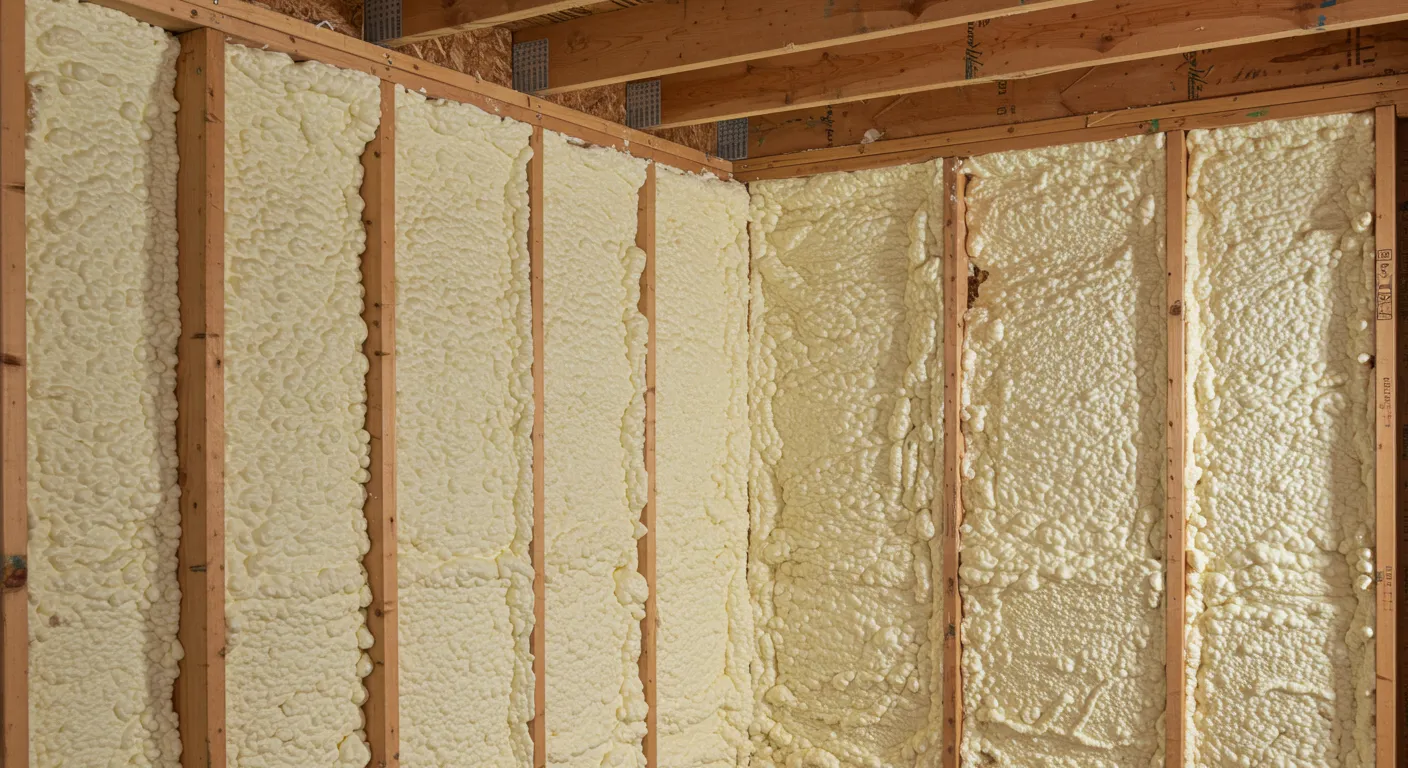When spray foam insulation is applied too thin in Glenns Eden, ID, it fails to provide the required air sealing, moisture resistance, and thermal barrier needed for effective insulation. Inadequate thickness compromises energy performance, accelerates HVAC wear, and can violate code requirements. Thin application can also result in poor acoustics, condensation issues, and premature material failure.
Thin layers create cold spots that increase heating and cooling costs, especially during Idaho’s winter lows that often dip below 20°F. If closed-cell foam is under-applied, it loses its structural and vapor barrier advantages. In open-cell foam, under-application reduces sound dampening and allows airflow through wall cavities.
Information here reflects firsthand experience with insulation failures observed during post-installation audits and thermal imaging diagnostics across varied property types in the region.
Technical Impact of Thin Spray Foam
| Specification Area | Proper Application | Thin Application |
|---|---|---|
| R-Value (Thermal) | Meets designed R-value (R-6.5/in for closed-cell) | Fails to meet R-value, resulting in heat loss |
| Air Seal Effectiveness | Fully blocks air infiltration | Allows drafts and airflow |
| Vapor Barrier Capability | Acts as moisture barrier (closed-cell) | Allows moisture penetration |
| Sound Dampening | Reduces airborne sound transfer | Minimal sound control |
| Structural Support | Provides added rigidity (closed-cell only) | Insufficient to enhance structural integrity |
| Compliance | Meets IRC/IECC standards | May violate insulation thickness codes |
| Longevity | Durable, with minimal shrinkage | Degrades faster, prone to peeling or cracking |
Local Climate Challenges in Glenns Eden
Spray foam must respond well to high thermal ranges in Glenns Eden, where winters bring freezing temperatures and summers experience high UV exposure. Thin foam lacks the mass to buffer these extremes.
- Cold season: Undersized insulation leads to ice damming, wall condensation, and frozen pipes.
- Summer heat: Inadequate thickness raises indoor heat gains and increases attic temperatures.
Comparison: Open-Cell vs Closed-Cell in Thin Applications
| Attribute | Open-Cell Foam | Closed-Cell Foam |
|---|---|---|
| Expansion | Expands 100x, risk of uneven fill | Expands 30-40x, denser |
| Structural Rigidity | Low | High |
| Vapor Barrier | No | Yes |
| Sound Control | Good when full-depth | Minimal with thin application |
| R-Value per Inch | ~3.6 | ~6.5 |
| Common Failure When Thin | Air leakage, poor acoustics | Loss of vapor barrier, structural gaps |
Bonus Tip: Installers should measure foam depth with calibrated pins or borescopes to verify uniform coverage, especially in wall cavities or behind wiring.

Market Insights
- According to IBHS research (Insurance Institute for Business & Home Safety), improper spray foam application is a leading cause of insulation-related mold and condensation failures.
- A 2024 DOE study showed that homes with under-applied foam insulation had an average of 18% higher heating and cooling bills.
- Energy Star’s 2023 guidelines recommend minimum spray foam thickness standards aligned with local climate zones. Glenns Eden falls in Climate Zone 5B.
Field Observations from Glenns Eden Projects
Technicians inspecting poorly insulated properties in Glenns Eden found consistent patterns:
- Basement Rim Joists: Thin foam allows air infiltration from crawl spaces.
- Attics: Under-applied foam leaves voids near rafters, reducing thermal envelope.
- Roof Decks: Incomplete coverage leads to frost accumulation in winter.
Bonus Tip: On-site core sampling after 24 hours is one of the most reliable verification methods to confirm spray foam depth.
Things to Consider Before Making a Decision
- Climate Demands: Cold winters and dry summers in Glenns Eden require foam thickness that meets or exceeds regional code.
- Code Requirements: Confirm compliance with IRC Table N1102.1.2 for required R-values per envelope component.
- Installation Quality: Ask if the contractor uses depth gauges, thermal cameras, and adhesive adhesion tests.
- Re-Application Cost: Fixing thin application often requires full removal. Prevention is more cost-effective.
- Material Type: Closed-cell resists vapor better but needs precise application to avoid structural gaps when thin.
Common Questions
How can you tell if spray foam is too thin?
Measure the depth using probes, core samples, or infrared thermal imaging.
Can another layer be added later?
Only if the existing layer is properly cured and structurally sound. Surface prep is essential to ensure adhesion.
Will thin spray foam cause mold?
Yes, in cases where moisture penetrates through gaps, especially around rim joists or rooflines.
Is the problem worse in cold climates?
Yes. Cold climates amplify the risk of condensation, leading to rot and ice buildup.
Valley Spray Works Services for Proper Insulation Coverage
Valley Spray Works provides installation services that ensure foam insulation is applied at the correct thickness to meet performance standards and avoid post-installation issues:
- Closed-Cell Spray Foam: Dense, moisture-resistant application ideal for basements, attics, and exterior walls.
- Open-Cell Spray Foam: Best for interior applications where sound control and breathability are needed.
- Spray Foam Roof Insulation: Prevents heat buildup and ice damming with continuous roof deck coverage.
- Intumescent Coatings: Fire-rated coatings applied over foam to meet code where required.
Get Expert Insulation Guidance
Ensure your insulation is applied correctly from the start. Contact Valley Spray Works to assess existing insulation or to request code-compliant installation in Glenns Eden, ID.
Phone: (208) 539-5281 Email: [email protected]
Frequently Asked Questions
What thickness should closed-cell foam be?
Minimum 1.5 to 2 inches per pass, depending on application location and code.
Does foam thickness affect fire safety ratings?
Yes. Intumescent coatings may be required if thickness exceeds certain limits in exposed areas.
What tools measure spray foam depth?
Depth probes, calibrated pins, borescopes, and thermal cameras are commonly used.
Can thin areas be detected after drywall is up?
Thermal imaging or borescope access points can help identify under-applied zones.
Is spray foam thickness required by code?
Yes. Thickness must meet code-based R-value targets depending on wall or roof assembly.



